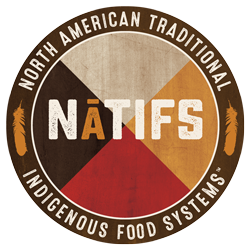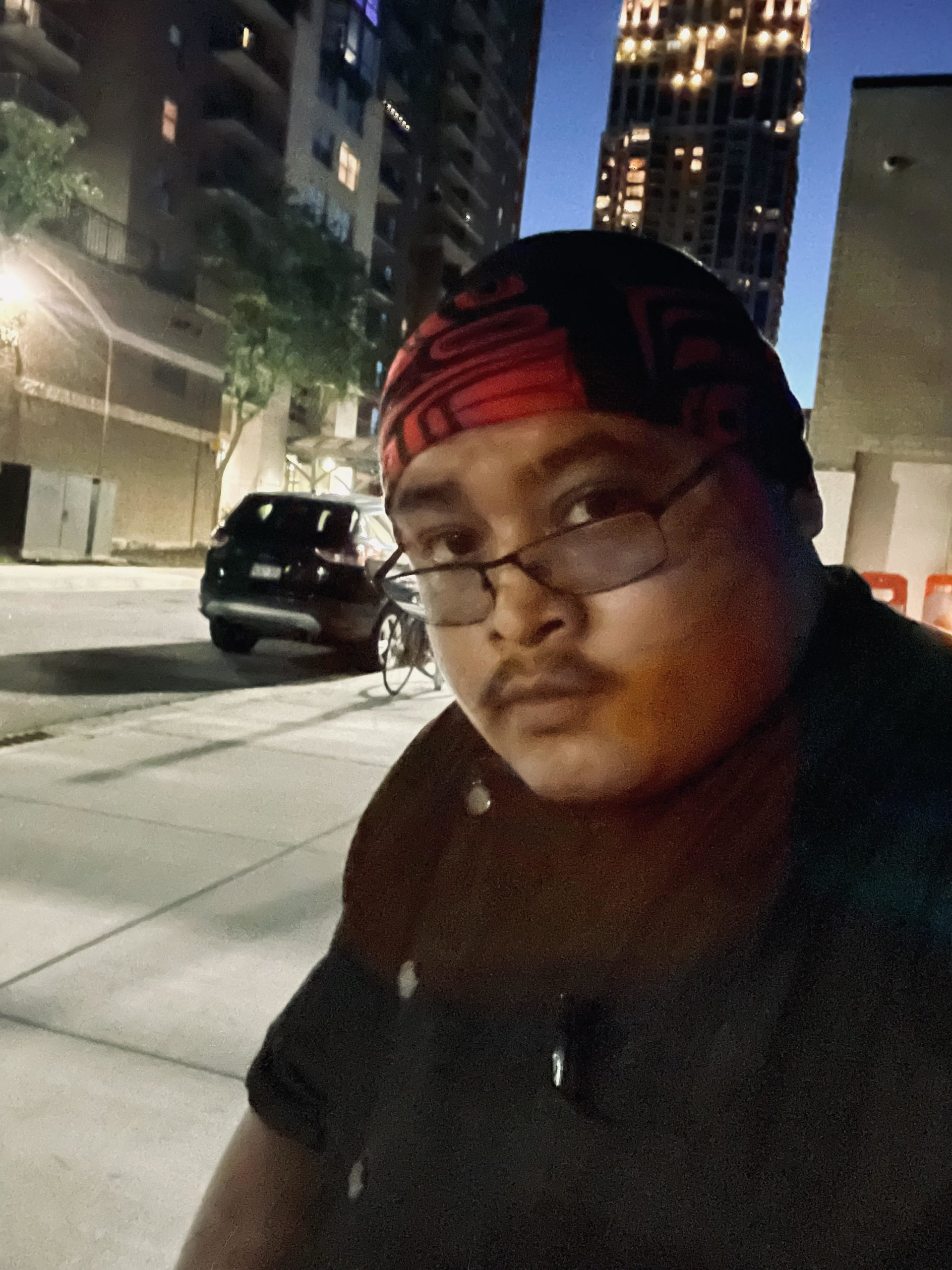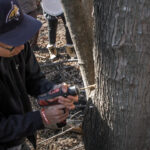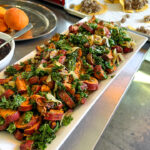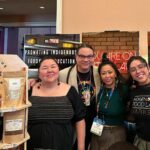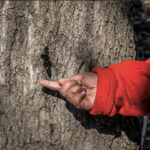Thomas Andrade came to visit us as a part of our training program here at the Indigenous Food Lab. He currently lives in Anchorage, Alaska with ties to the Tseshaht, Navajo, and Apache nations. He works as a nutrition coordinator for Cook Inlet Tribal Council in their holistic re-entry program for Indigenous men in recovery.
Our training program has been on hold due to Covid the last year, but we are slowly starting to take trainees. The program offers hands-on experience for Indigenous cooks, chefs, and anyone interested in “Indigenizing” their culinary program. At the Indigenous Food Lab, trainees can learn more about cooking and preparing Indigenous foods, as well as supporting Indigenous foodways through sourcing and education. We have the ability to customize learning based on needs and interests, and we have some funding available to support participation.
Thomas came to Minneapolis to work with us for two weeks; he split his time between the Indigenous Food Lab and Owamni to get a feel for both cooking and prepping on a large scale, as well as full-service restaurant experience. “I wanted to get ideas on how to Indigenize the menu I have back home,” he says. His intent when he began this program was to learn how to better implement Indigenous foodways into the culinary program he runs back at CITC in Anchorage.
He mentioned that a big surprise was just the sheer change in geography which in turn changed the ingredients that were readily available. In Anchorage, Thomas says they use a lot of seafood because they’re right on the coast, as well as big game. Whereas here, he was surprised at how plant-based the cuisine is.
He shared that there are similarities between Alaska and Minnesota as far as the foliage and herbs, as well as a larger shared idea of food as medicine. Thomas brought down some halibut to prepare and share with everyone at the IFL, and many people noted that it tasted very similar to walleye.
“Everyone is so well trained here. And what I mean is that everyone says this whole thing [solely Indigenous cooking] is new to them and they’re all still learning, but had I not known I would have never guessed,” Thomas says about the IFL staff. He notes that he admired the sense of community surrounding the Indigenous food movement in the Twin Cities because of how strong it is saying that “it’s something I’d like to see start to form back in Anchorage.”
Thomas intends to take back the skills he learned about the nixtamalization of corn and use that to make a variety of ingredients back in his culinary program. “Corn is economical and diverse with all the different strains — it can be used for so much,” he stated.
“Everything I came here looking for I found. You know, two weeks is just skimming the surface of this all, but I’ve learned so much. I’ve been approved by CITC to come back again and keep learning, so I’m hoping to do so as soon as possible.”
